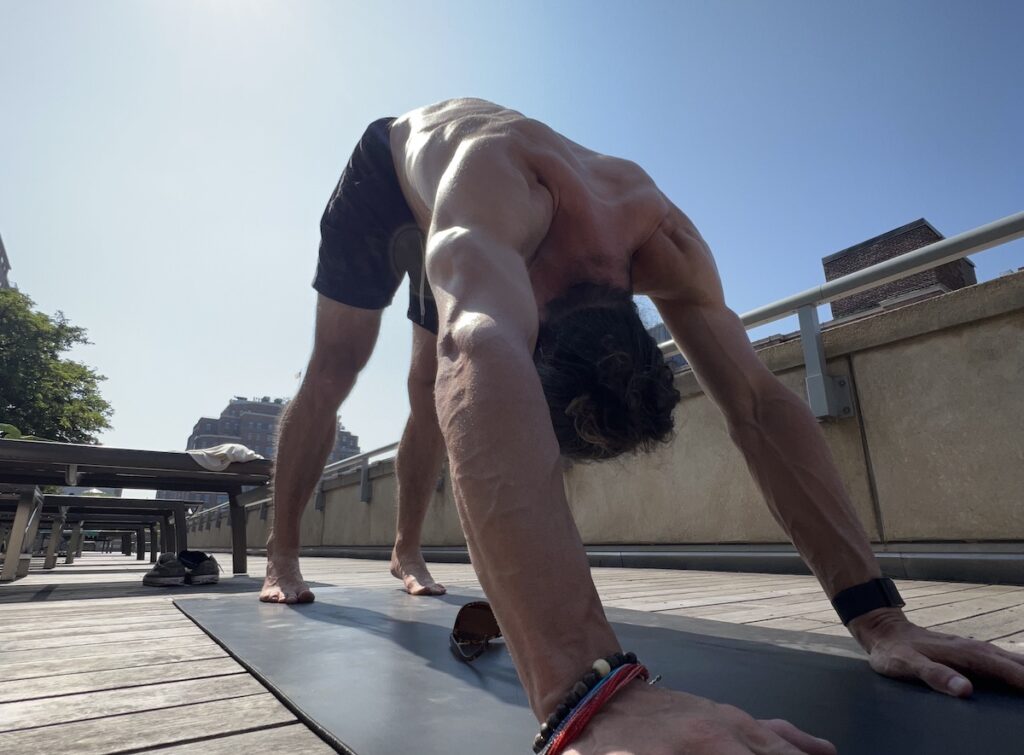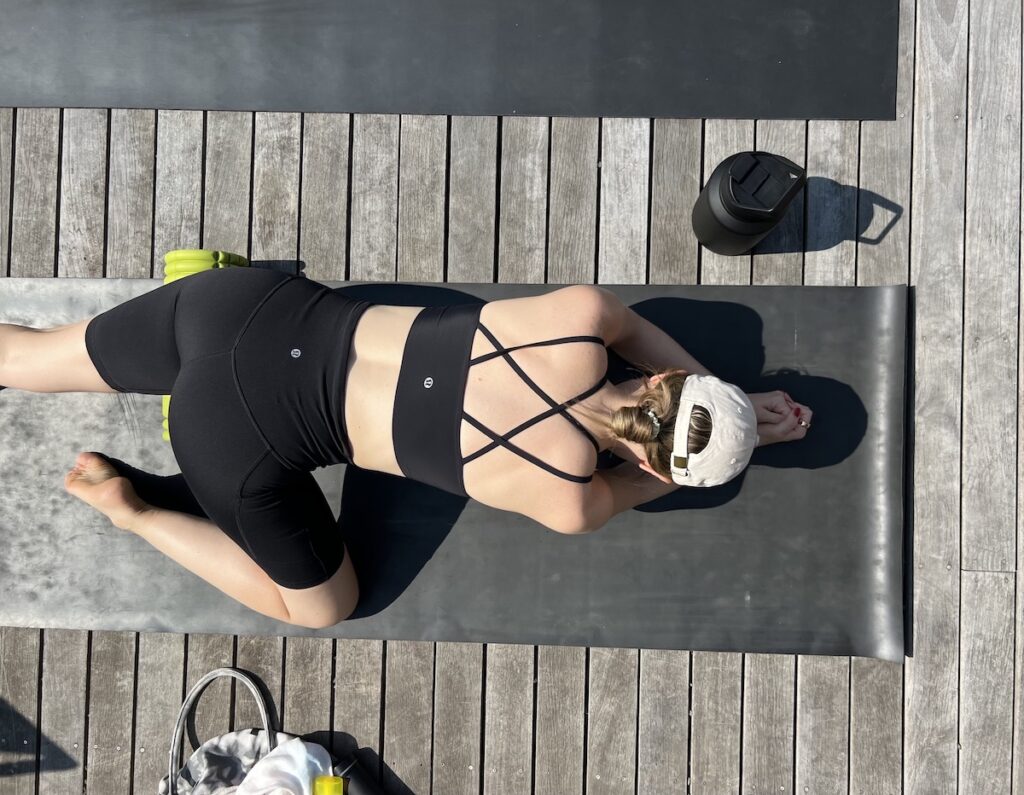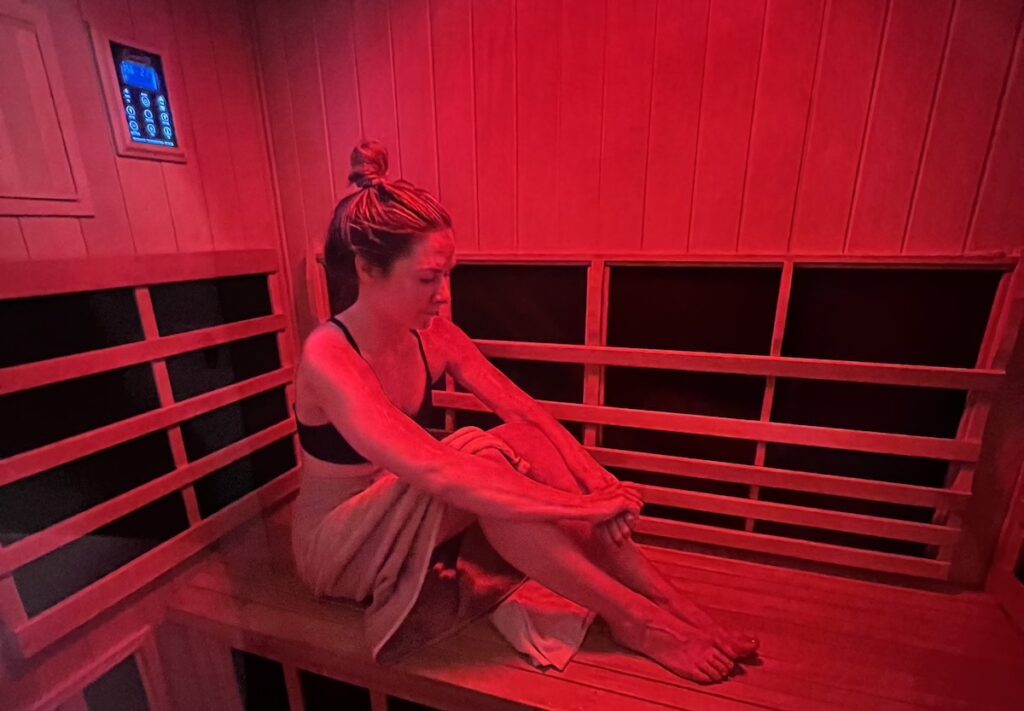Pushing the limits is a trait that defines high performers. We’re relentless, and always striving for that extra mile, that extra push, and that extra bit of excellence. But like a finely-tuned machine, even high performers need downtime. Anyone who claims to run at full throttle without rest is lying. Just as rigorous training is essential to peak performance, so is an optimized recovery protocol.
Here’s a blueprint for a day dedicated entirely to recuperation—a perfect day of recovery:
1. Low Intensity Movement

Sometimes we all need an off day, but most of the time, what we really need are active recovery or low intensity days to counterbalance the high intensity ones.
Restorative activities like walking, hiking, yoga, or light stretching and mobility are top of the list for us. It helps with circulation and allows nutrients to reach muscle tissues. We love gently moving around on a Manduka PRO yoga mat.
Read also: The perfect wind down routine to do every night
2. Hydration

Dehydration is sneaky. And it doesn’t take much to make an impact.
Research published in the Journal of Human Kinetics in 2021, asked over 250 coaches of track and field athletes about their knowledge around hydration. Over 97% of coaches and players knew not drinking enough water would make them compete worse, but about half of them thought they need to drink only when they are thirsty, but that’s not exactly true. Being thirsty means dehydration has already started.
For us, staying hydrated begins first thing in the morning by downing a glass of water with a pinch of salt. We also fill up our 64-ounce Stainless Steel HydroJug* one to two times per day to track our intake.
3. Soft Tissue Work

Tough workouts can lead to knots, adhesions, and tight spots in our muscles and fascia.
A comprehensive meta-analysis, published in the journal Frontiers in Physiology, which looked at 99 studies, looked at the best techniques to combat muscle soreness and tiredness after exercising. Their findings showed that massages came out on top. Not only did they help reduce that post-workout ache (DOMS) and tiredness, but they also significantly lowered signs of muscle damage in the body.
Do soft tissue work like foam rolling or percussion therapy are daily go-tos, but deep tissue massages are clutch when we can swing them. We like the Theragun and the Hypervolt for percussion therapy.
4. Heat Therapy

Heat therapy can boost blood flow, aid in detoxification, and soothe sore muscles. Our preferred methods are regular sessions of infrared sauna and the occasional hot bath with Epsom salt.
The performance benefits are interesting, too. A study on male long-distance runners in the Journal of Science and Medicine in Sports showed that using the sauna after a workout for three weeks increased the athletes’ time to exhaustion — or their running endurance — by 32% when compared to not using the sauna.
As for Epsom salt baths, the actual research is a bit less solid, there are plenty of reported users (ourselves included) that report feeling more relaxed, experience reduced muscle soreness, and sleep better after a soak.
5. Mental Resets

High performance isn’t just physical, it’s mental. Both physical exercise and mental work are stress on the body, and over time, it can wear you down. In fact, time off and vacations are non-negotiable.
Coincidentally, an Ernst & Young study showed that for every 10 hours of vacation an employee took, their year-end performance increased by 10%.
Dedicate a day to engage in practices that clear and calm the mind. This could mean meditation, deep-breathing exercises, journaling, or simply sitting in nature, free from digital distractions. We love a classic Moleskin journal for daily writings.
Read also: What is breathwork and how to start a practice
6. ZZZ Protocol

Research continues to pile up showing just how important sleep is.
One of the largest sleep studies published in the journal SLEEP in 2018 that included over 10,000 participants confirms 7-8 hours of sleep is the sweet spot for optimal cognitive function. And in order to make sure you’re getting those 7-8 hours, creating a sleep-conducive environment is key: dark, cool, and quiet.
Our pre-sleep routine includes dropping the room temperature to 66-67 degrees, not eating a heavy meal 1-2 hours before bed, turning off electronics 1-2 hours before bed, and taking a hot shower before laying down.
We also like to run our BLUEAIR air filter to keep our air clean of dust and other allergens.
Read also: 10 science-backed ways to get better sleep at night
Disclosure: This post contains affiliate links. As an Amazon Associate, we earn from qualifying purchases.

